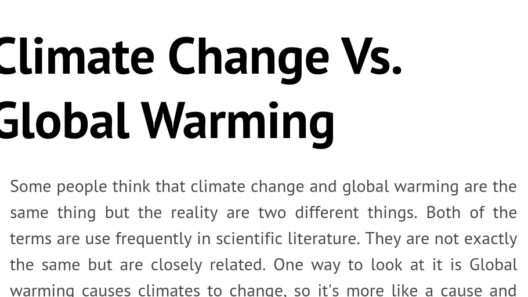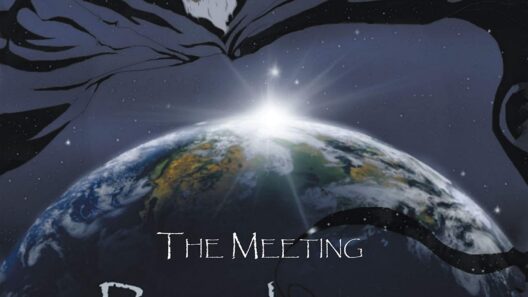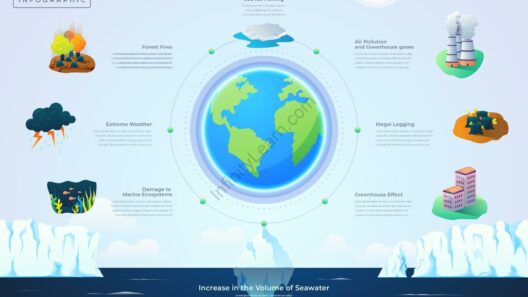In the grand tapestry of Earth’s ecology, weather serves as an intricate thread that binds together the delicate balance of our environment. However, as our planet wrestles with the encroaching specter of climate change, this once predictable and temperate thread has begun to unravel. The phenomenon known as global warming is not merely altering temperatures; it is metamorphosing our weather into a ferociously unpredictable beast, generating extreme events that are reshaping the very fabric of our ecosystems.
At its core, global warming exacerbates the natural variances in weather patterns, enhancing the potency of storms, droughts, floods, and heatwaves. Picture, if you will, a symphony conductor who has lost their score, frantically waving the baton while the orchestra spirals into cacophony. This is the new reality of our climate systems—an unparalleled dissonance fueled by rising greenhouse gas emissions, particularly carbon dioxide, methane, and nitrous oxide. These emissions act much like a blanket; they insulate the Earth, trapping heat and prompting atmospheric upheaval.
One of the most visible manifestations of this upheaval is the staggering increase in severe storms. Hurricanes, once limited in their ferocity, now arrive with greater intensity and frequency, akin to a leviathan emerging from the depths of an angry sea. The 2020 hurricane season, for instance, witnessed a record-setting number of named storms, a testament to the unruly nature of our changing climate. As warmer oceans provide abundant energy, these tropical storms transform into raging tempests, wreaking havoc on coastal communities and infrastructure.
Moreover, the severity of rainfall has escalated, leading to an uptick in flooding. Cities that once prided themselves on a reliable drainage system are now confronting unprecedented deluges, where once-fractured landscapes have become torrents that sweep away livelihoods and homes. Consider the metaphor of a sponge, saturated with water; it can only absorb so much before it begins to overflow. Our atmosphere is now that sponge, holding more moisture than ever, and when it rains, it pours—triggering flash floods with little warning.
Conversely, extreme weather does not solely manifest as moisture-laden storms. Droughts have become a persistent and malevolent specter that haunts vast expanses of land, transforming verdant fields into arid wastelands. Regions once reliant on consistent rainfall find themselves grappling with water scarcity; farmers face devastations akin to a slow-motion catastrophe. Withering crops signal not just agricultural decline but also threaten food security—a grim warning of what may come to pass as climate change continues its relentless advance.
Heatwaves, too, have reached monumental proportions. With each passing year, summer days are becoming scorchers that penetrate the skin and sizzle the earth. These searing temperatures do more than simply make life uncomfortable; they exacerbate pre-existing health conditions, strain energy resources, and ignite wildfires that threaten life and property. The metaphor here is a slow boil; as temperatures rise gradually, the toll on human health and safety becomes increasingly critical—often overlooked until it is dire.
Wildfires, those damaging infernos, have become a hallmark of our era. Flames that dance with a ferocity not seen in generations lay waste to expansive forests and habitats, injecting copious amounts of carbon into the atmosphere and further entrenching the cycle of warming. The smoke from these fires drifts across states and countries, a swirling harbinger of suffering and loss. Communities confront not only the destruction of their physical surroundings but also the profound emotional scars left in the wake of this fiery devastation.
Yet, amidst these dire events, it is crucial to underscore the interconnectedness of our global systems. When one part of the world experiences devastation due to extreme weather, the repercussions are felt far and wide—a cascade effect that transcends boundaries and cultures. Economies falter, food supplies dwindle, and social tensions rise, forming a nexus of complex challenges that demand urgent action. The metaphor of a domino effect is apt here; a single pushed tile triggers a sequence that, if left unchecked, leads to far-reaching consequences.
Addressing the cacophony of these extreme weather events requires an equal measure of urgency and innovation. Adaptation and mitigation strategies must become the guiding principles of our response. We must embrace renewable energy sources that reduce dependency on fossil fuels and invest in infrastructure that is resilient to these changes—fortifying our cities against the onslaught of storm surges and the ravages of drought.
In addition to infrastructural improvements, fostering a culture of awareness and preparedness is fundamental. Education must play an instrumental role in equipping communities with the knowledge needed to respond effectively to the uncertainties of weather patterns. Engagement with all stakeholders—governments, NGOs, businesses, and individuals—will crystallize the collective responsibility we share in confronting this existential threat.
The metaphor of a phoenix rising from the ashes resonates here; through concerted action, we have the potential to reshape our future. Instead of merely being passive observers of weather gone wild, we can emerge as active participants in fostering a sustainable, resilient world. Global warming’s grip on extreme weather events can be formidable, but it does not have to dictate our fate. With resolve, ingenuity, and unity, we can instigate a renaissance of environmental stewardship that honors the biosphere—ensuring that this planet remains a thriving home for generations to come.








